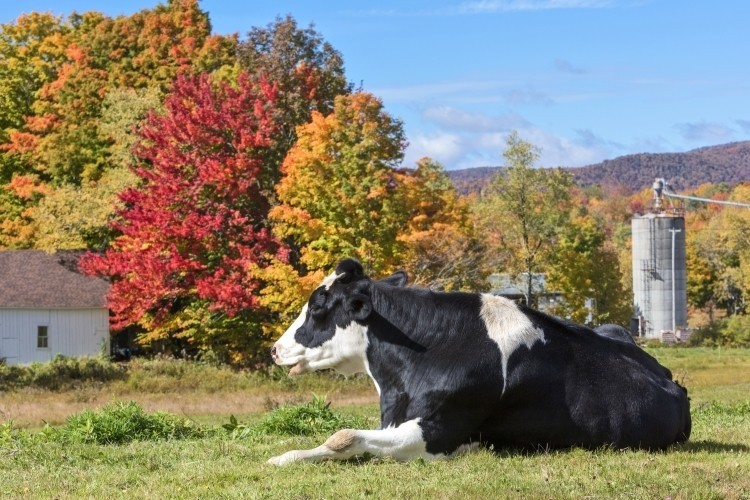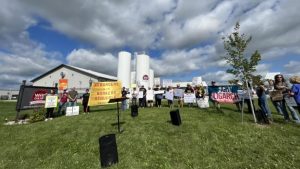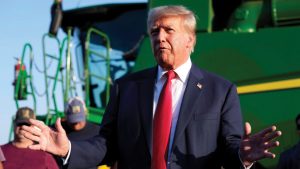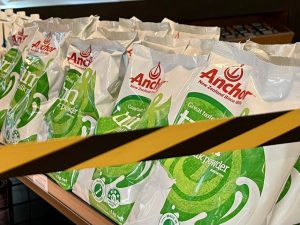
In June, Agriculture Secretary Tom Vilsack committed to providing additional pandemic assistance for dairy farmers in an exchange at a hearing with Senate Appropriations Committee Chairman Leahy. Through the program, USDA will provide about $350m in pandemic assistance payments to dairy farmers who received a lower value for their products due to market abnormalities caused by the pandemic. The assistance is part of a larger package including permanent improvements to the Dairy Margin Coverage safety net program.
“The Pandemic Market Volatility Assistance Program is another component of our ongoing effort to get aid to producers who have been left behind and build on our progress towards economic recovery,” said Vilsack.
“Family dairy farmers have been battered by the pandemic, trade issues and unpredictable weather and are the life-blood of many rural communities throughout Vermont, the Northeast and many other regions. This targeted assistance is the first step in USDA’s comprehensive approach that will total over $2bn to help the dairy industry recover from the pandemic and be more resilient to future challenges for generations to come.”
Senator Leahy said, “I thank Secretary Vilsack for directing this assistance to small dairies in Vermont and across the country, just as he told me he would when we spoke earlier in the summer. This will help to make up for losses suffered by these family farms due to the pandemic and together with the positive adjustments to the Dairy Margin Coverage Program will be good news for farmers go into the fall.”
Under the Pandemic Market Volatility Assistance Program, payments will reimburse qualified dairy farmers for 80% of the revenue difference per month based on an annual production of up to 5m pounds of milk marketed and on fluid milk sales from July through December 2020. The payment rate will vary by region based on the actual losses on pooled milk related to price volatility.
USDA will make payments through agreements with independent handlers and cooperatives. Handlers and cooperatives will distribute the monies on the same basis July – December 2020 payments were made to their dairy farmer suppliers and a formula set by USDA. USDA will reimburse handlers and cooperatives for allowed administrative costs.
USDA will contact eligible handlers and cooperatives to notify them of the opportunity to participate in the Program. USDA will distribute payments to participating handlers within 60 days of entering into an agreement. Once funding is provided, a handler will have 30 days to distribute monies to qualifying dairy farmers. As part of the program, handlers also will provide virtual or in-person education to dairy farmers on a variety of dairy topics available from USDA or other sources. A handler will have until March 1, 2022 to directly provide educational opportunities to dairy farmers.
The program is part of $6bn of pandemic assistance USDA announced in March to address gaps and disparities in previous rounds of assistance. Other pandemic assistance to dairy farmers includes $400m for a new Dairy Donation Program to address food insecurity and mitigate food waste and loss; and $580m for Supplemental Dairy Margin Coverage for small and medium farms.
Outside the pandemic assistance, USDA will also make improvements to the Dairy Margin Coverage safety net program updating the feed cost formula to better reflect the actual cost dairy farmers pay for high quality alfalfa. This change will be retroactive to January 2020 and is expected to provide additional retroactive payments of about $100m for 2020 and 2021.
Unlike the pandemic assistance, this change will also be part of the permanent safety net and USDA estimates it will average about $80m per year or approximately $800m over 10 years for dairy headed into the upcoming Farm Bill.
Move approved
The Dairy Business Association (DBA) and Edge Dairy Farmer Cooperative said they appreciate and welcome the assistance to dairy farmers.
In a joint statement, they said the payment program will make many farmers eligible for assistance closer to their actual losses.
“We can appreciate the difficulty in trying to ensure equitability within a complex system made even more so by the once-in-a-century disruptions caused by the pandemic. We encourage USDA to continue to work toward that goal,” the statement said.
“The situation demonstrates the critical need for thoughtful and comprehensive reform to the federal milk pricing system. That is why DBA and Edge along with several other Midwestern dairy groups early this year formed a task force to explore long-term solutions that would create stability going forward, including protection from negative producer price differentials that sapped millions in potential farm revenue.
“We look forward to more details about the rollout of the Pandemic Market Volatility Assistance Program and how it will affect our members.”

























